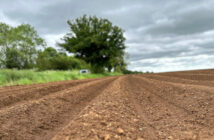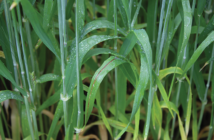With the blackgrass area expanding year on year, it has never been more important to review your control strategy for the season ahead.
Paul Fogg, crop production technical lead at Frontier, explains the importance of planning ahead with an integrated approach to blackgrass management, and learning from experience with current crops in the ground.
“A high weed population can have real cost implications, as just 100 blackgrass heads/m2 can create losses of one tonne per hectare,” he says.
“Variety selection, rotation choices, cultivation strategy and drilling date all form part of a successful, Integrated Crop Management (ICM) strategy. This combined with a robust herbicide programme will help reduce the spread of blackgrass, and protect future crops.
“Crop competition can be very effective, with high seed rates, narrow drill row spacing and more competitive varieties, for example hybrid barley, all proving beneficial.”
Dr Fogg explains the importance of mapping blackgrass areas within the standing crop, at this time of year, to aid in decision making for next year’s crop.
“Stale seed bed management, use of higher seed rates in the worst affected areas and the targeting of herbicide inputs, can all be implemented as a result of mapping blackgrass.
“I would also suggest that growers look at the condition of their soil. We know that black-grass thrives in heavy and poorly drained soil, so alleviating compaction and implementing an effective drainage system can all aid in reducing the risk of blackgrass and increased seed return. Again, this is something that can be planned ahead of the autumn drilling window where rotations allow.
“Last year, residual herbicide programmes worked very well, particularly when combined with delayed drilling, which generally afforded cool soil and good moisture levels.
“Stacking residual herbicides, built on a foundation of triallate and flufenacet, such as System 50, has also proved to be the most effective option.
“Flufenacet rates of 240 to 360 g/ha are now routine in bad blackgrass situations, at pre-emergence or as a sequence, split between pre-em and post-em. Typically, flufenacet is co-applied with other residual actives such as pendimethalin and diflufenican, to add to the grass weed activity and widen the weed spectrum.
“It’s important to review what has previously worked best on the farm, as well as understanding industry trials data, to ensure that growers are implementing the most effective herbicide programme this autumn,” he concludes.




